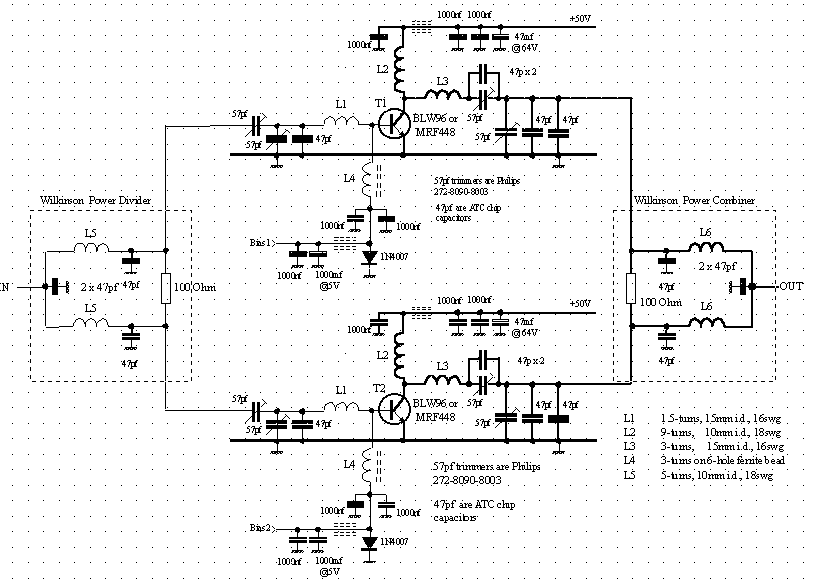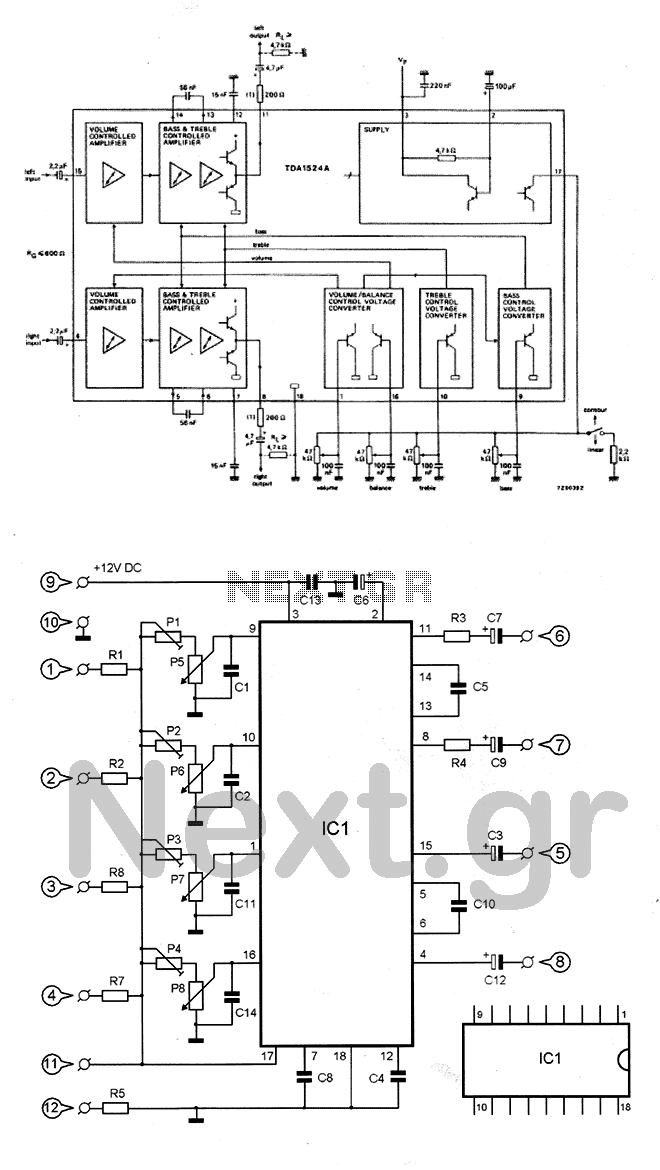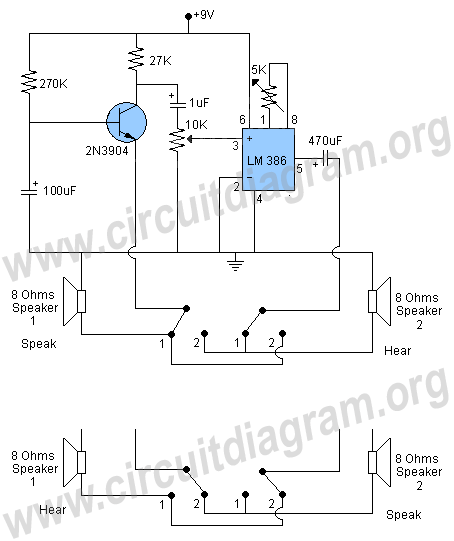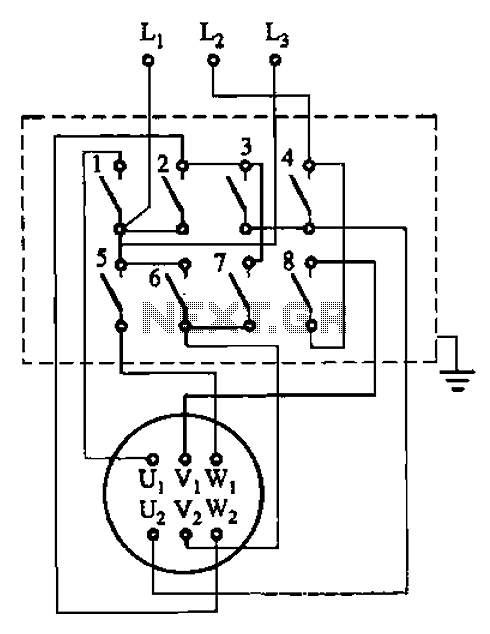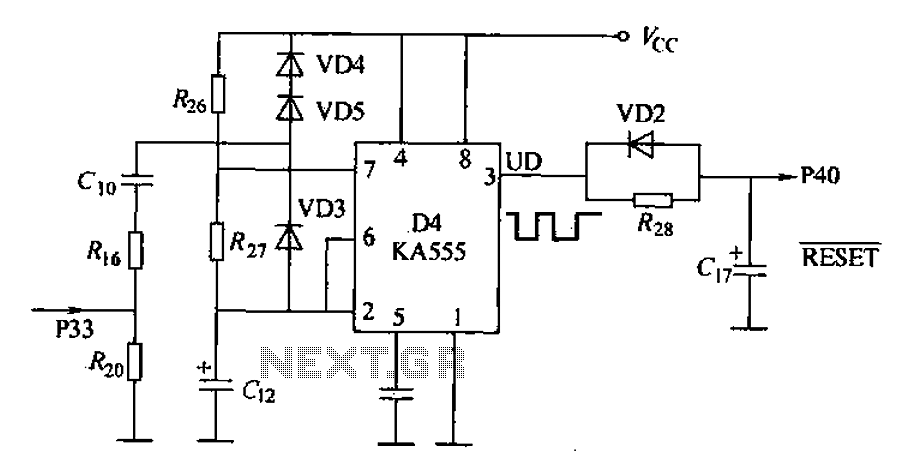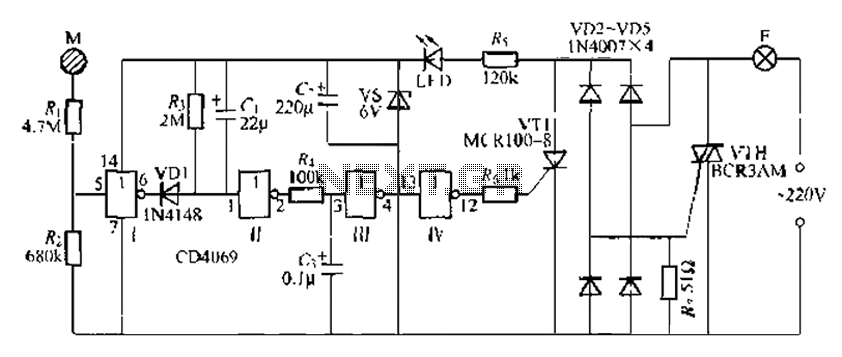
Bass-treble Tone Control Circuit
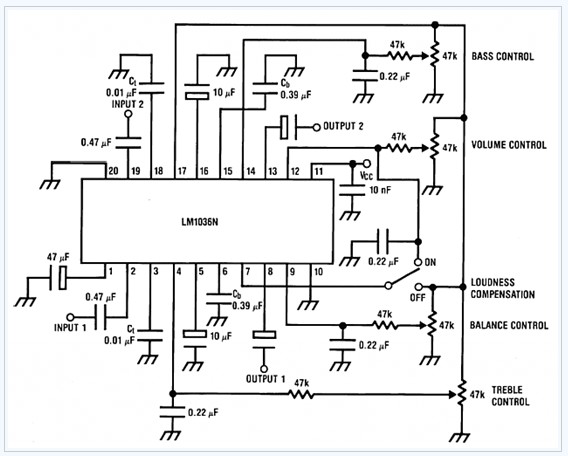
The LM1036 is a DC-controlled tone (bass/treble), volume, and balance circuit designed for stereo applications in car radios, televisions, and audio systems. It features an additional control input that facilitates loudness compensation. Four control inputs enable the adjustment of bass, treble, balance, and volume functions through the application of DC voltages from a remote control.
The LM1036 integrates various functionalities essential for audio signal processing in stereo systems. It operates by receiving DC voltage inputs that correspond to user-defined settings for tone control, volume, and balance. The circuit effectively modulates the audio frequencies by adjusting the bass and treble levels, ensuring that the sound output is tailored to the listener's preferences.
The balance control feature allows users to adjust the sound distribution between the left and right audio channels, enhancing the stereo experience. The volume control adjusts the overall loudness of the audio output, while the tone control enables fine-tuning of low and high frequencies. This versatility makes the LM1036 suitable for a wide range of applications, from automotive audio systems to home entertainment setups.
The additional loudness compensation feature is particularly useful for low listening levels, as it automatically boosts bass and treble frequencies to maintain a balanced sound profile. This is accomplished through an external control input that can be easily integrated into existing audio systems.
In terms of circuit design, the LM1036 typically interfaces with other audio components such as amplifiers and speakers, requiring careful consideration of signal integrity and power supply requirements. Proper PCB layout and component selection are critical to minimize noise and distortion, ensuring high-quality audio reproduction.
Overall, the LM1036 offers a robust solution for audio control, providing users with the ability to customize their listening experience in various stereo applications.The LM1036 is a DC controlled tone (bass/treble), volume and balance circuit for stereo applications in car radio, TV and audio systems. An additional control input allows loudness compensation to be simply effected. Four control inputs provide control of the bass, treble, balance and volume functions through application of DC voltages from a remote control..
🔗 External reference
The LM1036 integrates various functionalities essential for audio signal processing in stereo systems. It operates by receiving DC voltage inputs that correspond to user-defined settings for tone control, volume, and balance. The circuit effectively modulates the audio frequencies by adjusting the bass and treble levels, ensuring that the sound output is tailored to the listener's preferences.
The balance control feature allows users to adjust the sound distribution between the left and right audio channels, enhancing the stereo experience. The volume control adjusts the overall loudness of the audio output, while the tone control enables fine-tuning of low and high frequencies. This versatility makes the LM1036 suitable for a wide range of applications, from automotive audio systems to home entertainment setups.
The additional loudness compensation feature is particularly useful for low listening levels, as it automatically boosts bass and treble frequencies to maintain a balanced sound profile. This is accomplished through an external control input that can be easily integrated into existing audio systems.
In terms of circuit design, the LM1036 typically interfaces with other audio components such as amplifiers and speakers, requiring careful consideration of signal integrity and power supply requirements. Proper PCB layout and component selection are critical to minimize noise and distortion, ensuring high-quality audio reproduction.
Overall, the LM1036 offers a robust solution for audio control, providing users with the ability to customize their listening experience in various stereo applications.The LM1036 is a DC controlled tone (bass/treble), volume and balance circuit for stereo applications in car radio, TV and audio systems. An additional control input allows loudness compensation to be simply effected. Four control inputs provide control of the bass, treble, balance and volume functions through application of DC voltages from a remote control..
🔗 External reference
